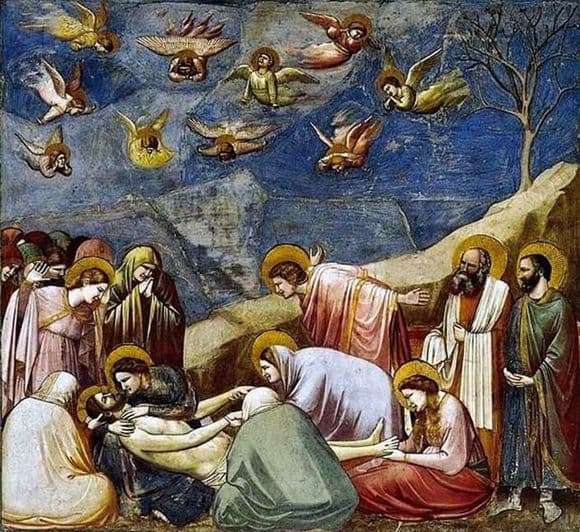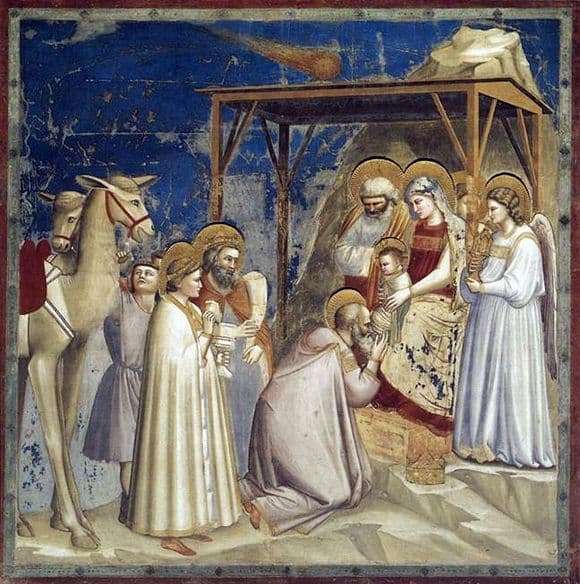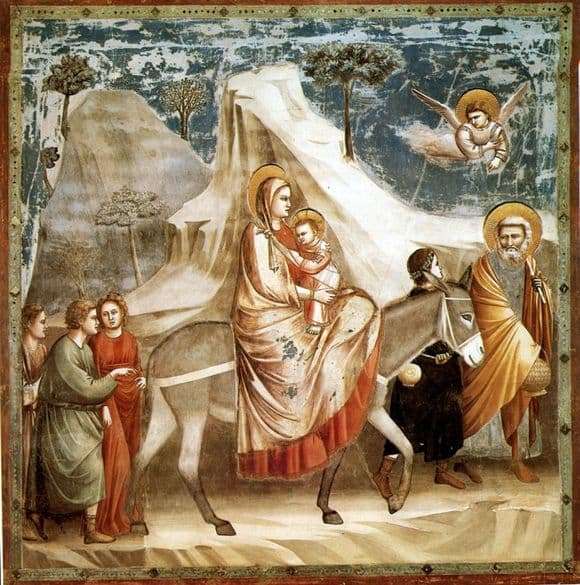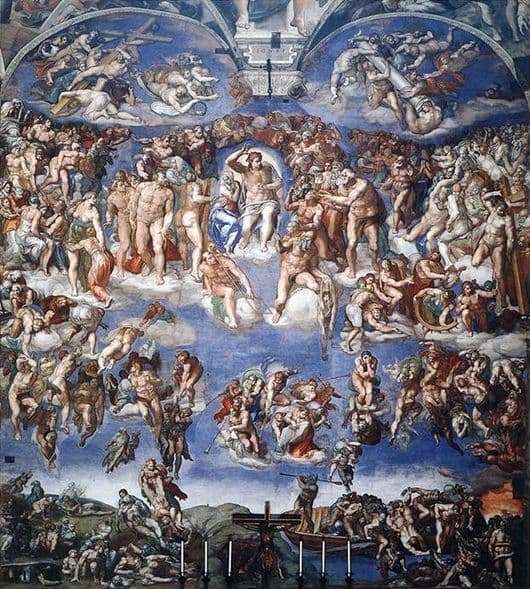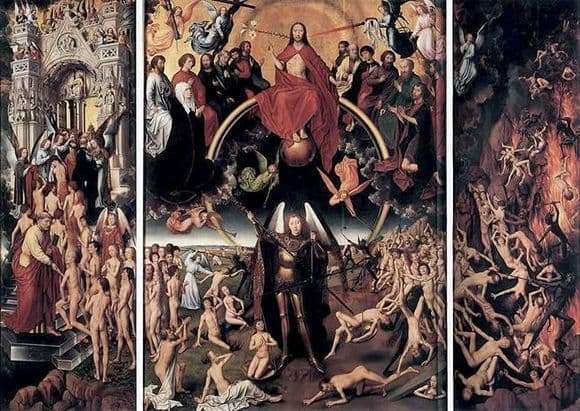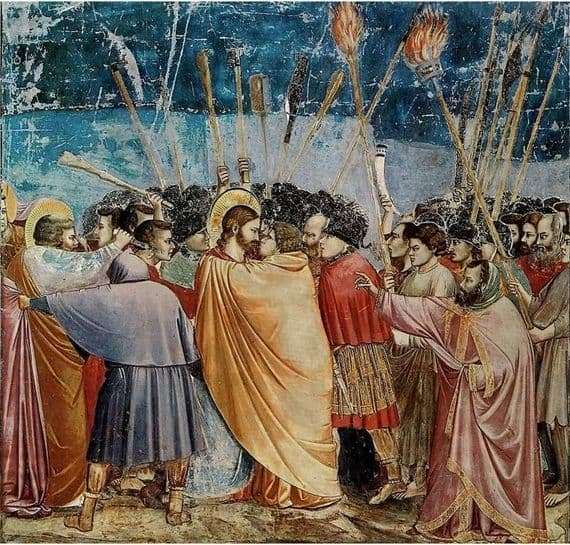
The fresco “Last Judgment” by the great representative of the Renaissance Giotto, has been decorating the walls of a small church in Padua for more than 500 years. Thanks to Giotto, the church or the Scrovegni Chapel became known throughout the world, and turned into a place of pilgrimage for thousands of tourists.
In this vast depiction of the Last Judgment, which is located in the western part of the church, is dominated by the great Jesus Christ, which rises majestically in the center. To his left and right are twelve apostles. In the middle of the cross hold the archangels Michael and Raphael. The fresco can be divided into two levels: the heavenly host is located above, at the bottom, people are dipped into the mouth of hell, or they move towards the sky, guided by angels.
Christ is on the throne as the supreme judge. The deep shining golden background, the finest painting style create the impression that the heavens have opened to show the powerful, extremely clearly modeled figure of Christ. At different levels of the fresco, you can see how the choirs of angels disappear behind a real window or at the top of the picture the golden-red doors of heavenly Jerusalem shine. Sharply contrasted with the heavens is the black and red mouth of hell, which may have anticipated Dante’s “Hell”.
Giotto ingeniously establishes the connection between today’s world of believers and the canonical world that existed throughout the entire universe – the Last Judgment. An interesting detail is the image of the customer built the church of Enrico Scrovegni. His kneeling figure is located at the bottom of the fresco. Skroveni thus pardoned the sins of his father-usurer, for then usury was equated with mortal sins.
Description of the Giotto Di Bondone’s “The Last Judgment”


